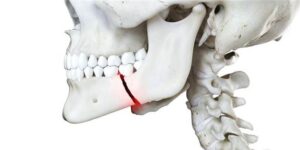Facial trauma involves damage to the face’s bones and tissues. This can range from minor cuts and bruises to serious structural harm. These types of injuries are surprisingly common. Raising awareness is crucial, as it encourages early intervention and minimizes complications.
This blog is designed to enhance the public’s understanding of what is facial trauma and stress the importance of seeking prompt professional care. It also highlights the benefits of new treatment innovations. Knowing more about these injuries leads to better outcomes and faster recovery. Let’s dive into the causes, symptoms, and effective treatments of facial injuries.
The Complex Nature and Causes of Facial Trauma
Facial injuries aren’t just skin-deep; they affect both soft tissues like cuts and bruises, and bones such as jaws, noses, and cheekbones. But what leads to these injuries? The causes can be varied and complex.
- Sports Accidents: Many people experience injuries playing contact sports like football or hockey.
- Vehicle Collisions: Car crashes often result in facial injuries due to sudden impact.
- Physical Assaults: Unfortunate but common, fights or attacks can cause serious damage.
- Work-related Incidents: Jobs requiring heavy machinery can sometimes lead to trauma.
- Rare Situations: These include severe occurrences like gunshots, which are less common but serious.
Understanding these causes helps us think of protective measures. Encouraging behaviors like wearing helmets in sports or promoting road safety can significantly reduce the incidence of such injuries. We all play a role in a safer environment.
Recognizing Symptoms and Pursuing the Right Treatment
Spotting facial trauma symptoms early aids in swift care. Look for signs like swelling, bruising, and pain. Other indicators may include broken bones or cuts.
To accurately diagnose these issues, several methods are used: – Physical exams: Doctors look for visible signs of trauma. – Imaging Tools: X-rays and CT scans help see below the skin. These techniques determine the severity of the injury and guide treatment.
Once diagnosing facial trauma, treatment might involve advanced surgical techniques. Facial trauma surgery is not just about fixing the bones but also ensuring functional and aesthetic recovery. Surgeons aim to restore the face’s structure while maintaining its appearance.
Recovery isn’t just physical—emotional rehabilitation is key. Trauma can affect self-esteem and emotional well-being. Recovery plans often include counseling to help restore confidence and address psychological impacts. Having a support system and professional guidance is essential.
Rehabilitation goes beyond the doctor’s office. Exercises and care instructions at home ensure full recovery. With the right treatment plan, restoring facial function and appearance is within reach.
Prevention and Road to Recovery—Practical Tips and Considerations
Safety is essential to avoid types of facial trauma. Here are some handy tips:
- At Play: Wear helmets and protective gear during sports.
- On the Road: Always buckle up and follow traffic regulations.
- At Work: Use safety equipment around heavy machinery.
- At Home: Be mindful of potential hazards and keep emergency contacts handy.
Early diagnosis and intervention can change the trajectory of many cases. Seeking help immediately can prevent complications later on. Regular follow-ups ensure that problems are caught and managed early, contributing to a smoother facial trauma recovery.
Rehabilitation is a blend of physical therapy and emotional support. It might involve exercises to regain function and counseling to address the psychological impacts of trauma. Comprehensive rehab strategies foster complete restoration, both functionally and cosmetically.
Talking openly about trauma boosts community awareness. By sharing information and experiences, we encourage others to seek facial trauma treatment promptly. Early medical attention ensures best outcomes, and awareness campaigns can make a significant difference in reducing trauma.
In conclusion, understanding what is facial trauma is crucial. Recognizing symptoms, knowing the causes, and adhering to prevention tips can significantly reduce risks. With timely facial trauma surgery and rehabilitation, recovery can be robust. Being informed helps build a safer and more resilient community.
Facial trauma can result from various incidents such as accidents, sports injuries, or falls, leading to fractures, soft tissue injuries, or nerve damage. Symptoms may include swelling, bruising, pain, and difficulty moving the jaw or face. Timely and proper treatment is essential for effective recovery and to minimize long-term complications such as scarring or functional impairments.
At Aditya Hospital, our expert team specializes in diagnosing and treating facial trauma with advanced techniques and personalized care plans.
Consult Aditya Hospital today for a thorough evaluation and treatment plan that will help you recover fully and restore your facial health.



